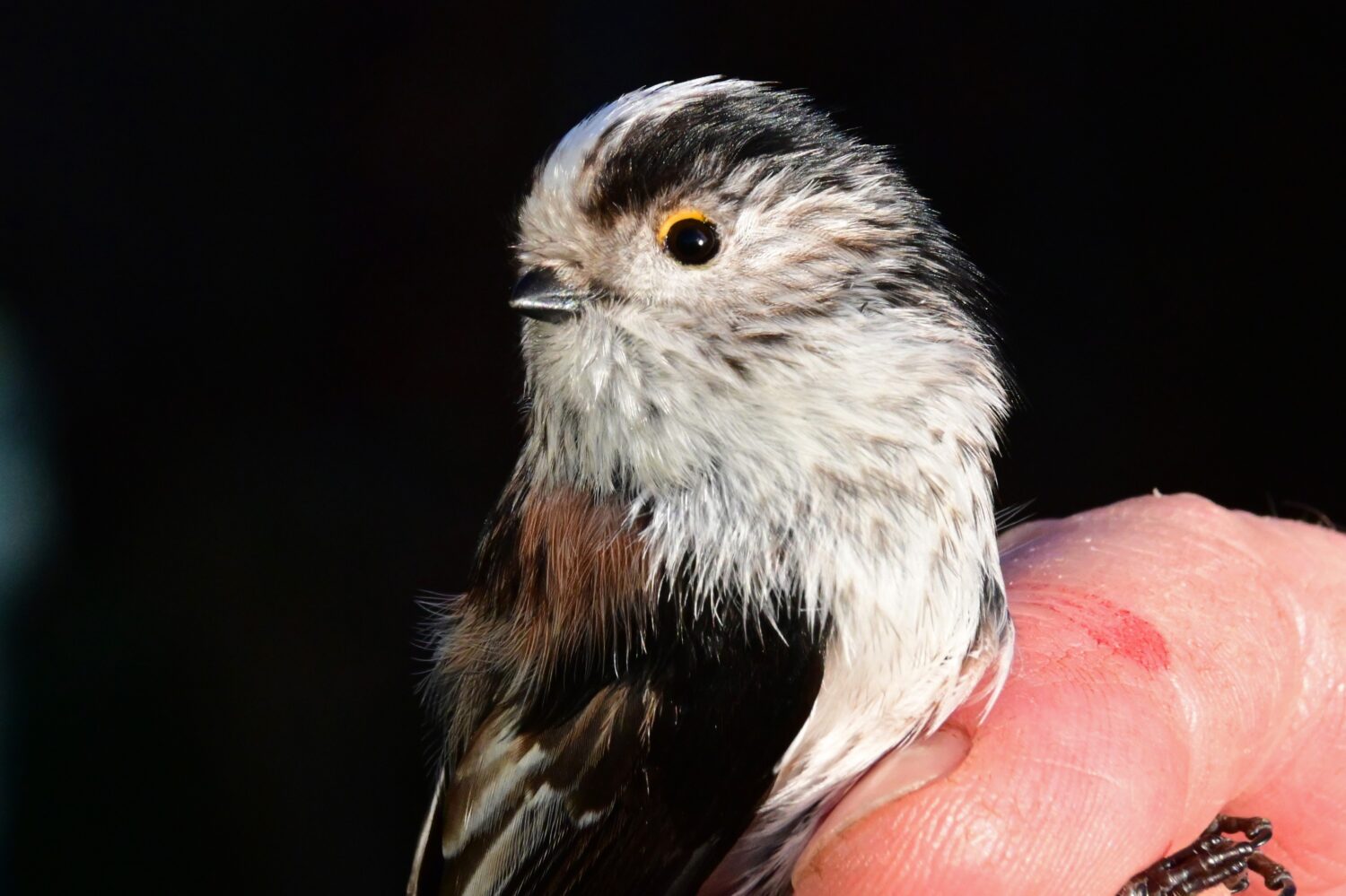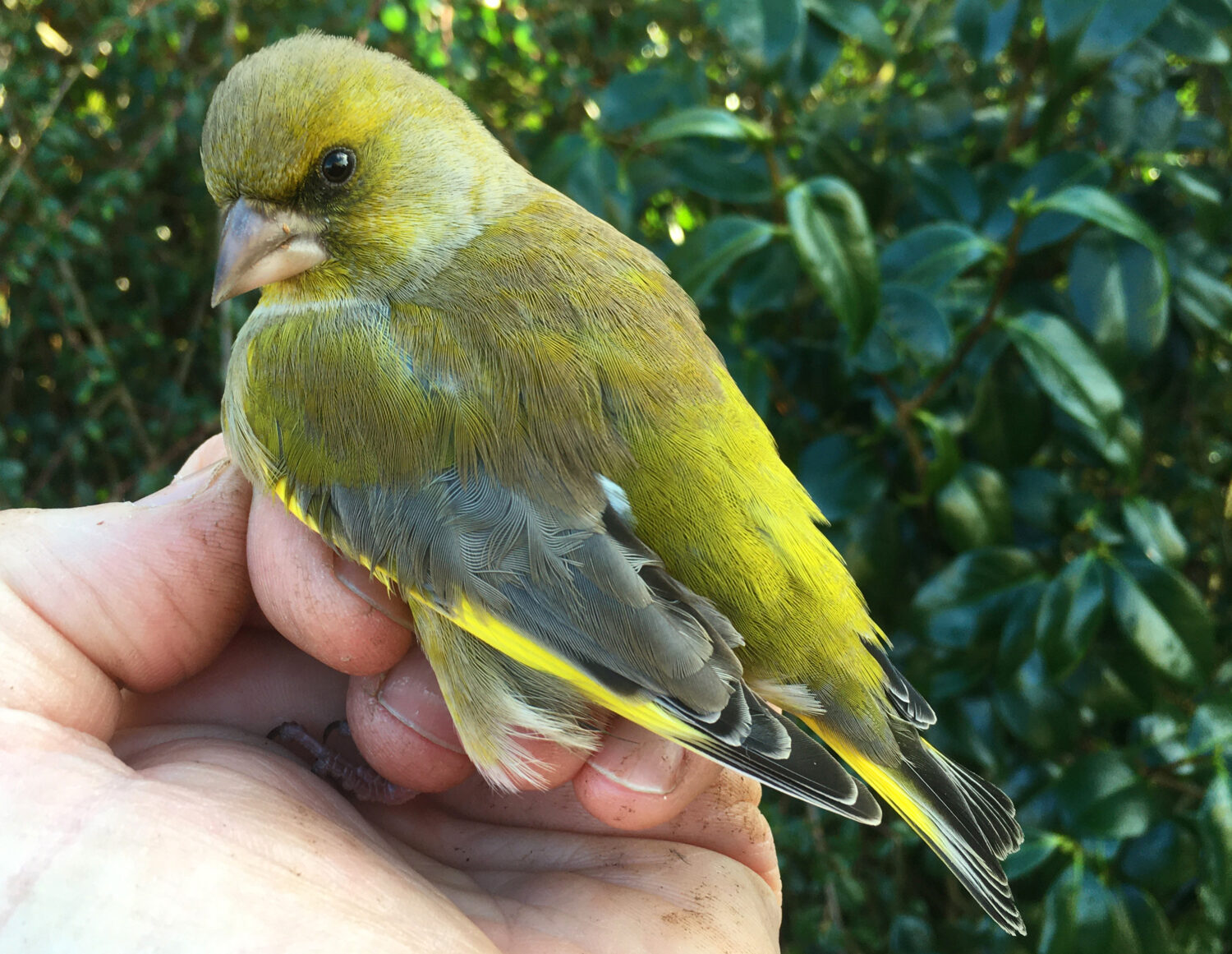North East ornithologist, Phil Hanmer, shares a new update summarising bird ringing across Northumberland throughout January
Returns from the British Trust for Ornithology (BTO) have been particularly interesting this month and have included a new report on the Barn Owl (FH92017) that went from Snitter (west of Rothbury) to Wrexham in North Wales. This female owl was ringed as a pulli on the 7 June 2014 and then ‘controlled’ nesting down near Wrexham on the 12 July 2018. It was controlled again on the 31 December 2018 when a member of BTO witnessed its ring number. The most recent capture was on the 9 January this year at a different site but still near Wrexham. There was also news of a Blackbird (LN65135) that was ringed at Howick back on the 11 February 2021 near my home at Lemmington Hall – its currently residing at Friesland in Holland. Next, there was a well-travelled (and long-lived) Blue Tit (S284197); ringed back on the 2 September 2016 which was controlled down on the Isle of Wight on Christmas Day! Two more local and more characteristic Blue Tit movements were also reported; one ringed at Swarland in February 2020 was at my house on the 18 December 2021 and another also ringed at Swarland on the 10 July 2021 was at Howick on the 9 October 2021.
Getting back to the BTO Winter Ringing Pilot Project I did a session at home on 9 January and captured 47 birds (35 new and 12 retraps) including four Long Tailed Tits (Lotti’s) from January 2021; we can therefore say that they are definitely adults and must be at least in their second year of life; and possibly older. We can only derive this from ringing dates because it’s impossible to age a Lotti from its plumage at this time of year. If it was a Blue Tit or Great Tit, we could look for the presence or absence of juvenile covert feathers to get an indication of age but because Lotti’s do a complete moult into ‘adult type’ feathers within a few months of leaving the nest they cannot be aged.. This also proves that Lotti’s are not closely related to our other common tits. Of the new birds there were another eleven Lotti’s as well as Blue Tits, Tree Sparrows, Coal Tits, Dunnocks, a single Blackbird, a Robin and a beautiful adult male Greenfinch. Greenfinches are unfortunately quite a rarity these days being particularly susceptible to several diseases.
Setting up again on 16 January we captured only 24 birds (12 new and 12 retraps). The retraps included a Blue Tit from 2018 and a Nuthatch from last year. The new birds included Coal Tits, a Robin, Great Tits, Blue Tits and Dunnock.
We are still discovering the after-effects of Storm Arwen and will need to raise some more funds sometime to replace broken bird boxes – including tawny/goldeneye duck boxes in the Breamish Valley and Barn Owl boxes at other locations. This is not to mention small boxes at sites like one near Doxford; where I have a long-term study running, as illustrated by the attached photo showing the storm damage.
Fortuitously the Coast Area of Outstanding Natural Beauty currently has DEFRA funding to erect some Barn Owl boxes on farms that adjoin the coast this year and working with Coast Care Volunteers at Seahouses I recently instructed on how to put these together. Surprisingly it proved to be a warm sunny day for outside bird box joinery (see photo). Starting to check on box sites further north on 28 January we erected one new box, located an entirely new male owl in an existing box near Wooler and found a dead owl on a farm south of Wooler. The dead owl was ringed and proved to be one of last years few owlets that apparently died within a few months of leaving its nest.
In order to monitor the effect of this current winter on our local owls please report findings of dead owls to myself or your local Natural History Group/Society (especially if they have a ring number).
Currently, we’re waiting for the weather to improve so we can get on with making, repairing; and putting up new bird boxes for a variety of species including owls and Goldeneye. Ideas for good sites are always welcome as are donations.

Long-tailed Tit © Phil Hanmer 
Greenfinch © Phil Hanmer